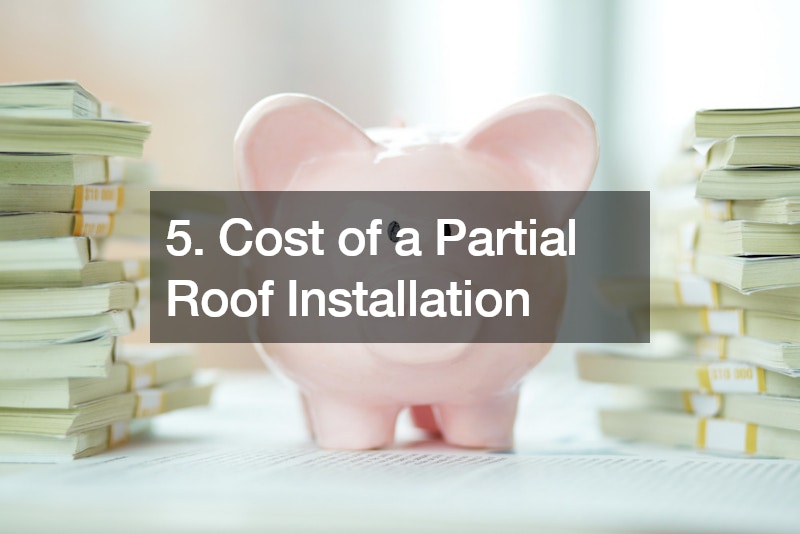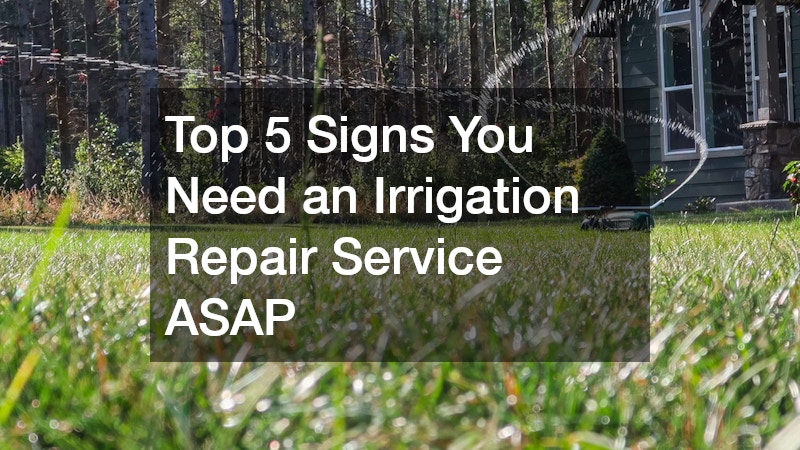
A partial roof replacement is a common solution for homeowners facing roof damage that affects only a portion of their roof. Understanding when a roof replacement is necessary and what signs to look for can help you take the right steps to protect your home. In this comprehensive guide, we will walk you through the process of getting a roof replacement, from choosing the right contractor to post-project maintenance.
1. Understanding Partial Roofing Replacement
Partial roof replacement involves replacing only the damaged or deteriorated sections of your roof, rather than replacing the entire roof. This can be a cost-effective solution for addressing specific issues without the need for a full roof replacement.
Situations where a partial roofing replacement might be necessary include localized damage from a storm, wear and tear in specific areas, or leaks that are isolated to certain sections of the roof.

2. Signs You Might Need a Partial Roofing Replacement
Signs of roof damage that may indicate the need for a partial roofing replacement include missing or damaged shingles, leaks or water spots on your ceiling, and visible signs of wear and tear on your roof. If you notice any of these issues, it’s important to have a professional inspect your roof to determine the extent of the damage.
You may need a partial roof replacement if the damage is localized to a specific area of your roof, rather than being widespread. A qualified roofing contractor can assess the damage and recommend the best course of action for repairing your roof.
Ignoring signs of roof damage can lead to further issues such as structural damage, mold growth, and higher repair costs down the line. Addressing the problem early with a partial roofing replacement can help prevent more extensive damage to your home.
3. Choosing a Contractor for Your Partial Roof Replacement
When selecting a contractor for your partial roof replacement, it’s essential to look for a reputable roofing company with experience in handling residential roof installations. Ask for recommendations from friends and neighbors, read online reviews, and request quotes from multiple residential roofing contractor options to compare prices and services.
A reliable roofing contractor should be licensed, insured, and knowledgeable about the latest roofing materials and techniques. They should also provide a written estimate detailing the cost of the project, the timeline for completion, and any warranties or guarantees offered.
Working with a trustworthy roofing contractor can ensure that your partial roofing replacement is done correctly and efficiently, giving you peace of mind knowing that your home is protected from further damage.
4. Obtaining Permits and Permissions
Depending on where you live, you may need a permit for a partial roofing replacement. Check with your local building department to determine the requirements for your area and ensure that all necessary permits are obtained before starting the project.
Obtaining permits typically involves submitting an application, paying a fee, and scheduling inspections as needed. A reputable roofing contractor should be familiar with the permit process and can assist you in obtaining the necessary permissions for your partial roofing replacement.
Failing to obtain the required permits for your roof project can result in fines, delays in the construction process, or even legal issues. It’s essential to follow the regulations set forth by your local building department to avoid any complications during or after the roof replacement.

5. Cost of a Partial Roof Installation
The cost of a partial roof installation can vary depending on factors such as the size of the damaged area, the materials used, and the complexity of the project. On average, partial roof replacements can range from $2,000 to $10,000, with larger or more intricate projects costing more.
Some roofing companies offer financing options for roof replacements, allowing homeowners to spread out the cost of the project over time. Inquire with your contractor about any financing plans available and choose the option that best fits your budget and needs.
Investing in a partial roof installation is a worthwhile expense that can protect your home from further damage and increase its value. Consider getting multiple quotes from local roofers to find the best deal for your project.
6. Materials Used in Partial Roof Installation
Common materials used in partial roof replacements include asphalt shingles, metal roofing, tile roofing, and slate roofing. The type of material best suited for your roof will depend on factors such as the climate, the architectural style of your home, and your budget.
Asphalt shingles are a popular choice for partial roof installations due to their affordability and durability. Metal roofing is another option that provides excellent protection against the elements and can last for decades with proper maintenance.
Consult with your roofing contractor to determine which material is best for your partial roof installation based on your specific needs and preferences. Choosing the right material can ensure that your new roof is both functional and aesthetically pleasing.
7. Timeline for a Roof Replacement
The timeline for a roof replacement can vary depending on factors such as the size of the project, the weather conditions, and the availability of materials. In general, roof replacements can take anywhere from a few days to a few weeks to complete.
Factors that can affect the timeline of the project include any unexpected issues that arise during the construction process, delays in obtaining permits, or inclement weather that hinders work. Your contractor should provide you with a timeline for the project and keep you updated on any changes or delays that may occur.
Planning ahead for the timeline of your partial roof replacement can help ensure that the project is completed in a timely manner and that your home is properly protected throughout the process. Work closely with your contractor to establish a realistic timeline that meets your needs.
8. Preparing Your Home for the Roof Replacement
During a roof replacement, it may not be necessary to move out of your home, as the work is typically confined to the damaged area of the roof. However, you may need to make accommodations for noise, dust, and debris during the construction process.
To protect your belongings during the roof replacement, consider covering furniture and valuables with plastic sheeting, moving vehicles away from the work area, and informing your neighbors about the upcoming construction. Clearing the area around your home can also help the contractors access the roof more easily.
Your roofing contractor should provide you with detailed instructions on how to prepare your home for the roof replacement and what to expect during the construction process. Following these guidelines can help the project run smoothly and minimize disruptions to your daily life.

9. The Roof Replacement Process
The process of a roof replacement typically involves several steps, including an initial inspection of the roof, removing the damaged materials, preparing the substrate, installing new roofing materials, and conducting a final inspection. Your roofing contractor will oversee each stage of the project to ensure that the work is done correctly.
While a partial roof installation can be disruptive to your daily routine, a reputable contractor will strive to minimize any inconvenience by working efficiently and cleaning up the work area at the end of each day. Communicate openly with your contractor throughout the project to address any concerns or questions that may arise.
By understanding the steps involved in a partial roof replacement and working closely with your contractor, you can ensure that the project is completed to your satisfaction and that your home is well-protected from the elements. Trust in the expertise of your roofing contractor to deliver high-quality results that stand the test of time.
10. Dealing with Unexpected Issues
During the course of a partial roofing replacement, your contractor may uncover additional damage that was not initially apparent. If this occurs, it’s essential to address the issues promptly to prevent further problems down the line.
If unexpected issues arise, such as rotting wood or structural damage, your contractor should communicate with you about the necessary repairs and provide a detailed explanation of the additional costs involved. While it can be frustrating to deal with unforeseen problems, resolving them quickly can help avoid more extensive damage to your home.
Work with your roofing contractor to develop a plan for addressing any unexpected issues that arise during the partial roof installation. By staying informed and proactive, you can ensure that the project stays on track and that your home is safe and secure once the work is complete.
11. Inspecting the Completed Project
After the partial roof installation is complete, it’s crucial to inspect the work done by the contractor to ensure that it meets your expectations and that your roof is watertight. Look for signs of proper installation, such as straight shingle lines, secure flashing, and uniform spacing between materials.
During the final inspection, your roofing contractor should walk you through the completed project and address any concerns you may have. They should also provide you with information on how to care for your new roof and what to expect in the months and years ahead.
By conducting a thorough inspection of the completed project, you can rest assured that your new roof meets industry standards and is ready to protect your home for years to come. Communicate openly with your contractor about any issues or questions that arise during the inspection process.
12. Post-Project Maintenance and Care
After a partial roof replacement, it’s important to perform regular maintenance tasks to ensure the longevity of your new roof. Keep an eye out for signs of damage, such as missing or damaged shingles, leaks, or discoloration, and address any issues promptly to prevent further damage.
To extend the lifespan of your new roof, consider scheduling annual inspections with a professional roofing service to identify and repair any potential problems before they escalate. Cleaning gutters, trimming overhanging branches, and keeping the roof free of debris can also help maintain its integrity.
By staying proactive about the maintenance of your roof, you can prolong its lifespan and minimize the need for costly repairs in the future. Taking care of your roof now can save you time, money, and stress down the line.

13. Warranty and Guarantees
When hiring a roofing contractor for a partial roof installation, be sure to inquire about the warranty and guarantees offered for the work and materials used. A reputable contractor should provide you with a written warranty outlining the terms and coverage of the guarantee.
Warranties for roofing work typically cover defects in installation and workmanship, while material warranties protect against faults in the roofing materials themselves. Make sure you understand the details of the warranty before signing any contracts to ensure that you are adequately protected.
If an issue arises with your new roof that is covered under the warranty, contact your roofing contractor immediately to schedule repairs. By honoring the terms of the warranty and working with a reliable contractor, you can ensure that your investment is protected for years to come.
14. Staying Informed About Your Roof
To stay informed about the condition of your roof and know when it’s time for a partial roof replacement, keep an eye out for signs of damage such as leaks, missing shingles, or sagging areas. Regularly inspecting your roof and addressing any issues promptly can help prevent further damage to your home.
Consider scheduling annual roof inspections with a local roofing contractor to assess the health of your roof and identify any potential problems early on. Being proactive about roof maintenance can save you time and money in the long run by avoiding costly repairs or replacements.
15. Frequently Asked Questions About Partial Roofing Replacements
Some common FAQs about partial roof replacements include questions about the cost of the project, the timeline for completion, the materials used, and the warranties offered by contractors. By educating yourself about the process of a partial roof installation, you can make informed decisions about your home’s maintenance and care.
If you have additional questions about partial roofing replacements or need more information about roofing services in your area, reach out to local roofing contractors for guidance. They can provide you with the expertise and support you need to ensure that your home is properly protected from the elements.
In conclusion, a partial roof replacement can be a cost-effective and practical solution for addressing roof damage and protecting your home. By understanding the signs that indicate the need for a partial roof installation, choosing a reputable residential roofing company, and staying informed about the process, you can ensure that your roof is well-maintained and functional.


